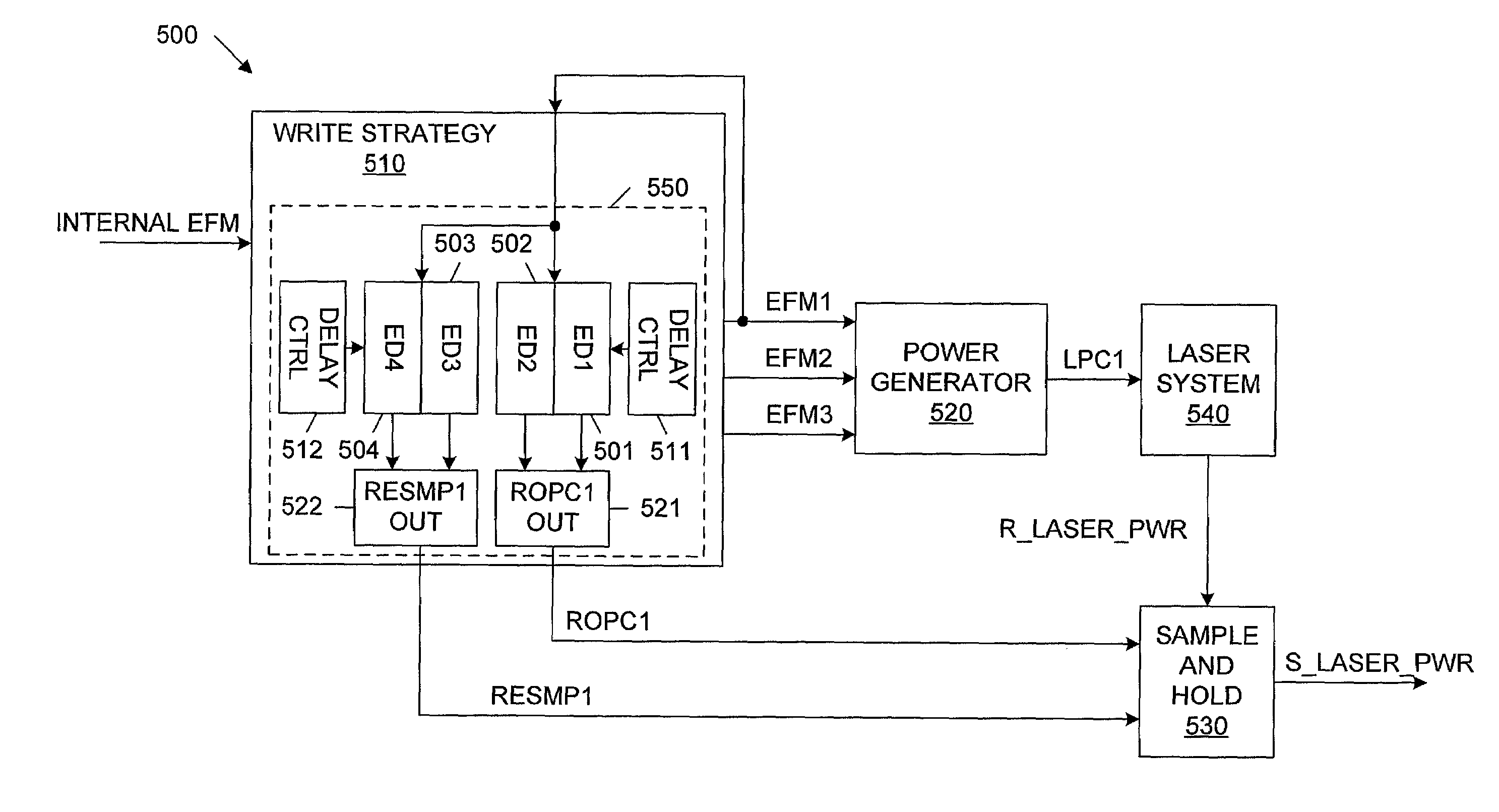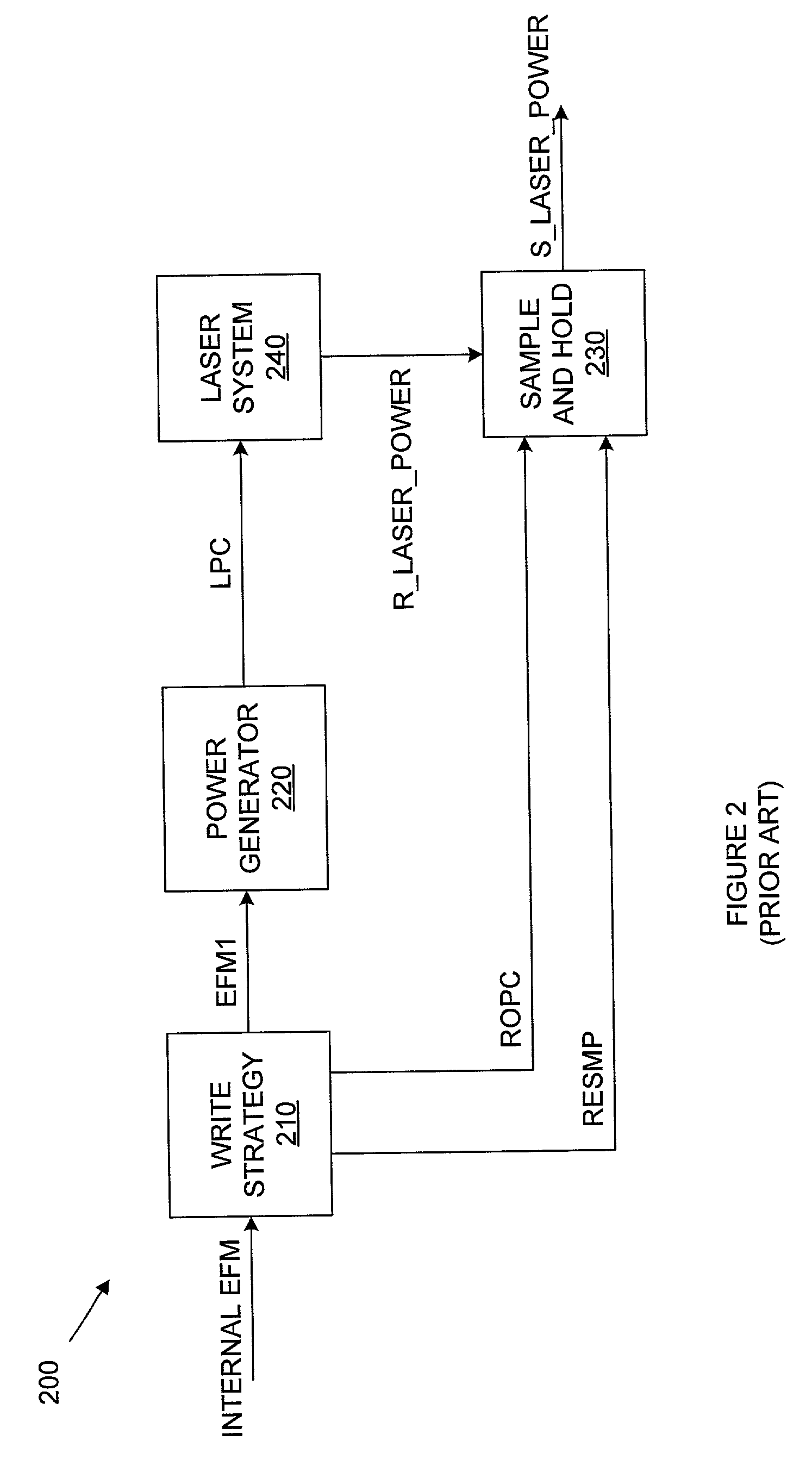Read and write sample and hold signal generation
a sample and signal technology, applied in the field of optical media, can solve the problems of delay in writing strategy circuit, other problems, undetectable increase of transition noise,
- Summary
- Abstract
- Description
- Claims
- Application Information
AI Technical Summary
Benefits of technology
Problems solved by technology
Method used
Image
Examples
Embodiment Construction
[0034]As described below, a write strategy circuit is used to generate ROPC1 and RESMP1 sampling control signals in response to a laser power control signal EFM1, rather than directly in response to an internal EFM signal. The laser power control signal EFM1 is generated in response to the internal EFM signal. Generating the ROPC1 and RESMP1 sampling control signals in response to the EFM1 signal causes these sampling control signals to be more closely aligned with the data to be sampled.
[0035]A user programmable delay circuit is used to generate the ROPC1 and RESMP1 sampling control signals in response to the EFM1 signal. The user programmable delay circuit allows the various edges of the ROPC1 and RESMP1 sampling control signals to be time shifted with respect to corresponding edges of the EFM1 signal. The amount of time shifting is determined by the user by programming the user programmable delay circuit to store user-selected delays. By choosing the user-selected delays in the a...
PUM
 Login to View More
Login to View More Abstract
Description
Claims
Application Information
 Login to View More
Login to View More - R&D
- Intellectual Property
- Life Sciences
- Materials
- Tech Scout
- Unparalleled Data Quality
- Higher Quality Content
- 60% Fewer Hallucinations
Browse by: Latest US Patents, China's latest patents, Technical Efficacy Thesaurus, Application Domain, Technology Topic, Popular Technical Reports.
© 2025 PatSnap. All rights reserved.Legal|Privacy policy|Modern Slavery Act Transparency Statement|Sitemap|About US| Contact US: help@patsnap.com



